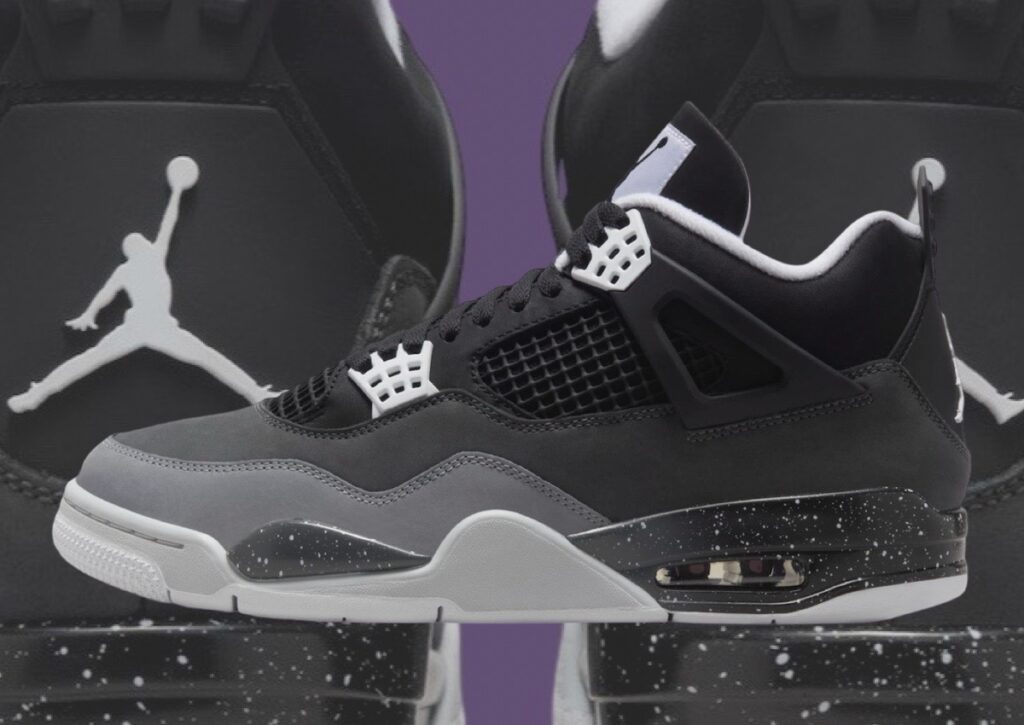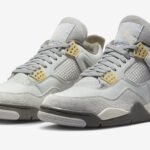“`html
Air Jordan 4 Fear: Price Comparison and Finding the Best Deals
The Air Jordan 4 “Fear” was part of the iconic “Fear Pack” released in 2013, drawing inspiration from the “Become Legendary” marketing campaign and the universal emotion of fear athletes face. As a highly sought-after sneaker, its price can vary significantly across different platforms. Comparing prices is crucial because it helps consumers ensure they are getting the best possible value for their money, potentially saving a significant amount on high-demand items like these coveted kicks.
Retailer Comparison
Originally, the Air Jordan 4 “Fear” retailed for around $175 when it was released in August 2013. However, being a release from over a decade ago, these sneakers are no longer available at standard retail stores for their original price. You won’t find them on the shelves of Foot Locker, Nike, or similar retailers new. Any “new” pairs available today are exclusively through the resale market.
Resale Market Analysis
The resale market is where you’ll primarily find the Air Jordan 4 “Fear.” Prices here fluctuate based on several factors, including size, condition (new/deadstock vs. used), and platform.
- StockX: Prices for a new pair of Air Jordan 4 “Fear” on StockX typically range from approximately $450 to over $750, depending heavily on the shoe size. Smaller or very large sizes often command different prices than more common sizes. The platform’s authentication service is a key draw.
- GOAT: GOAT shows similar pricing trends to StockX. New pairs can list from around $480 to $800+. GOAT also offers pre-verified used pairs, which might be found for slightly less, perhaps in the $350-$600 range depending on condition.
- eBay: eBay presents the widest range of prices due to the variety of sellers and conditions (from heavily used to brand new). You might find listings anywhere from $300 (for used or less reputable sellers) to $800+ for pristine, authenticated pairs. Vigilance is key on eBay to ensure authenticity.
Factors affecting resale prices:
- Condition: Deadstock (DS) or brand new, unworn pairs with the original box command the highest prices. Used pairs will vary significantly based on wear and tear.
- Size: More common sizes (US 8-11) often have more availability but can also see high demand. Less common sizes can sometimes be more expensive due to scarcity.
- Authenticity & Seller Reputation: Purchases from platforms with robust authentication (StockX, GOAT) or highly reputable individual resellers often come at a premium for peace of mind.
- Market Hype & Rarity: As a classic and beloved colorway, the “Fear” AJ4 maintains strong demand, keeping prices high.
Tips for Finding Deals
Finding a “deal” on a hyped shoe like the Air Jordan 4 “Fear” is challenging, but here are some tips:
- Be Patient: Prices can fluctuate. Monitor listings over time if you’re not in a rush.
- Consider Used: If you’re okay with gently used pairs, you can save a significant amount. Look for pairs with minimal wear and original boxing if possible.
- Check Multiple Platforms: Don’t just rely on one source. Compare prices across StockX, GOAT, eBay, and even sneaker forums or Facebook groups (with caution).
- Negotiate (where possible): On platforms like eBay or in direct sales, there might be room for negotiation, especially for used pairs.
- Look for Seller Sales/Promos: Occasionally, consignment stores or individual resellers might run promotions, though this is rare for highly sought-after items.
- Beware of “Too Good To Be True”: If a price seems drastically lower than the market average, especially for a new pair, it’s a major red flag for fakes.
Authenticity Guide: Spotting Fake Air Jordan 4s
With high resale values come counterfeit sneakers. Here are some general tips for spotting fake Air Jordan 4s (specifically, things to scrutinize for the “Fear” model):
- Overall Shape and Proportions: Familiarize yourself with the authentic silhouette. Fakes often have a clunky toe box, incorrect heel shape, or overall poor proportions.
- Stitching Quality: Authentic Jordans have neat, consistent, and high-quality stitching. Messy, frayed, or uneven stitching is a bad sign.
- Jumpman Logo: Pay close attention to the Jumpman on the tongue and heel. On fakes, the proportions might be off (e.g., “lollipop head,” skinny arm, poorly defined fingers or shoelaces). For the “Fear” colorway, the tongue Jumpman is white, and the heel Jumpman is black.
- Tongue Tag: The “Flight” script below the Jumpman on the tongue should be clear and well-defined. The materials and stitching on the back of the tongue tag are also important.
- Netting: The plastic netting on the sides and lower tongue should be properly angled and have a quality feel. Fakes often have flimsy or incorrectly aligned netting.
- Material Quality: The “Fear” colorway features a distinctive dark grey suede/nubuck upper with black and white accents. Fakes may use cheaper materials that look or feel off. The texture of the suede is key.
- Box and Label: The box should be sturdy, with correct labeling, fonts, and SKU (Stock Keeping Unit) number. The SKU for the Air Jordan 4 “Fear” (2013) is 626969-030. Mismatched or poorly printed labels are red flags.
- Smell: Authentic Nikes have a distinct factory smell. Fakes often have a strong, unpleasant chemical odor due to cheaper adhesives.
- Insole: Check the print quality on the insole and the stitching underneath if you can remove it.
When in doubt, get a legit check from a reputable source online or a trusted sneaker expert.
Conclusion
The Air Jordan 4 Fear is a very cool shoe that lots of people want. It costs a good bit of money. You usually can’t buy it new from regular shoe stores anymore. You have to buy it from other people or special websites. The price can be different depending on where you look and what size you need. Always check if the shoes are real, so you don’t get a fake pair. If you really want these sneakers, save your money and be smart about where you buy them!
“`



